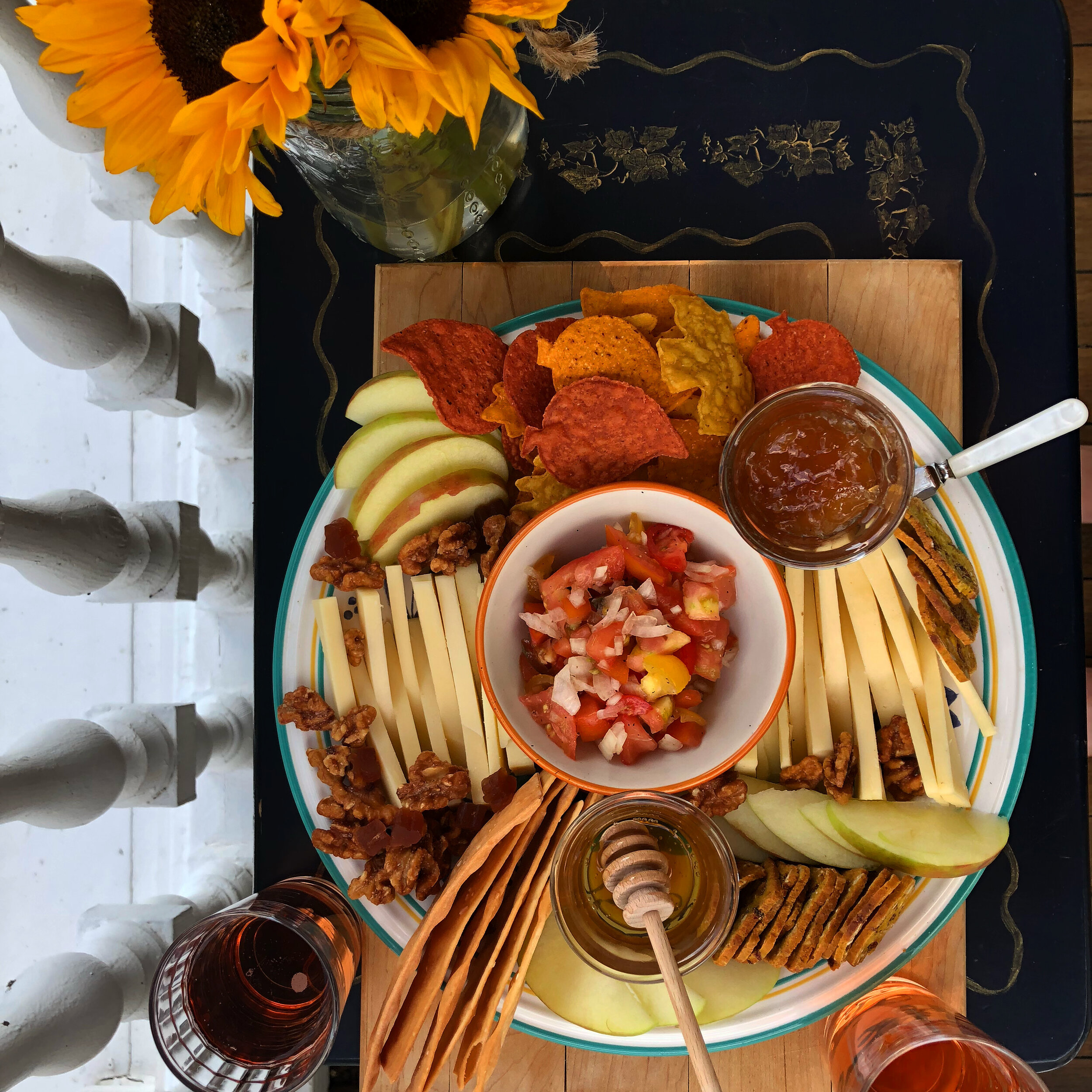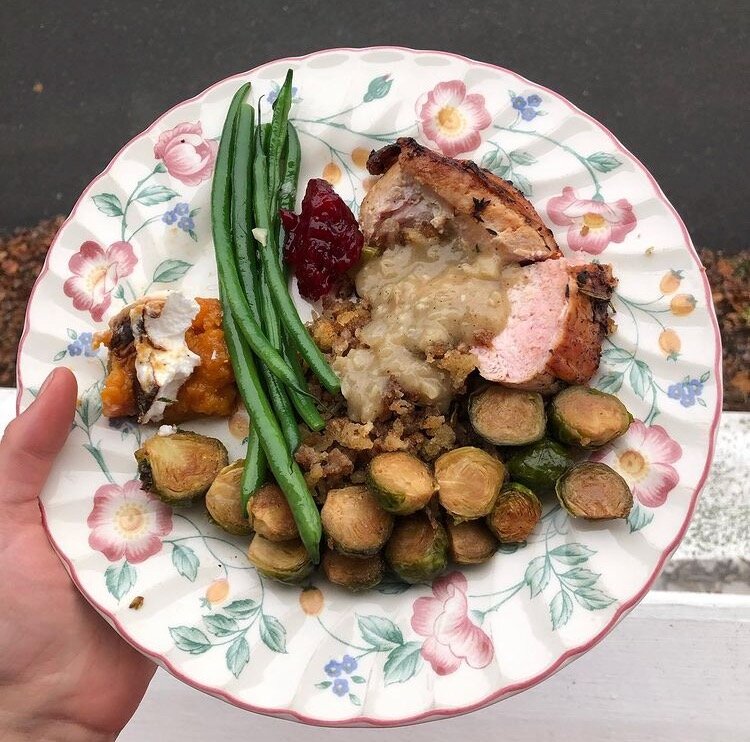By Lily Reavis ’21
Editor-In-Chief
Under normal circumstances, Mount Holyoke students are required to purchase a full on-campus dining plan each year. So when the campus closed in March, students like Naomi Brown ’21 were unexpectedly left with extra household responsibilities and no ready-made meals. Without the options of running to the dining hall between classes or visiting Late Night, Brown has spent the past six months cooking for herself, her family and her roommates. Her dishes, often inspired by music and memories, have even made an appearance on social media. Brown’s self-titled “Platterstagram” (@platterstagram on Instagram) showcases her homemade meals, inventive recipes and themed plates from inside quarantine.
After Mount Holyoke announced its closure this semester, Brown and three of her friends from the College moved into an apartment in South Hadley. All four housemates enjoy cooking, and the shared kitchen has become a space for relaxation and friendship.
“Normally, in non-pandemic times, I would go to a movie with my friends or go to a party or something. And obviously, I’m not doing that now, so that’s the thing we do together instead of going out somewhere,” Brown explained. “We stay in, and every week we make a plan for what we’re going to make, and it’s our thing to look forward to.”
On campus, Brown found it difficult to cook regularly because of a lack of kitchen and storage space. Although seven residence halls contain “Golden Pear” kitchens, students are largely responsible for supplying their own pots and pans. The closest grocery store is driving distance from campus, which can be a challenge for those without access to a car. In addition, students from outside of New England generally keep their school supplies in shared storage units over the summer break. Bulky kitchen items would take up room in the small dorms and storage areas, and cooking space is limited on campus to begin with. However, that doesn’t mean that students are opposed to cooking.
Brown grew up watching her parents put immense care into each meal they cooked, with the bonus of being able to help around the kitchen when asked. She and her sister were invited to ask questions about recipes and cooking processes as kids, and creativity was always encouraged.
When Brown got older, she began working at a summer camp where the high schoolers were responsible for cooking meals. Through that experience, she recognized that most people dislike certain foods because they haven’t had them prepared well. By putting care, effort and proper seasoning into vegetables and main courses, Brown explored new possibilities for ingredients she hadn’t previously given much thought. Working at the summer camp also taught her how to cook healthy meals for large groups, since roughly 100 kids attended each year. Now, that skill helps Brown plan and execute her own meals while working 30 hours a week and taking a full course load.
“I plan ahead for whatever I’m going to make and try to think about how many ingredients I’m going to be using each week,” she said. By fully using each ingredient and cooking meals every weekend, Brown manages to keep her grocery bill relatively low while also eating healthy, filling meals.
Each weekend, Brown cooks two or three meals, which she eats for lunch and dinner throughout the week. “By the end of the week, I’m kind of like, ‘Oh my god, this again?’ but at the same time, I’m only spending the money on the ingredients for those three dishes and then eating them all week,” she explained. “And I get to try new things every week.”
This Thanksgiving was the first time Brown spent the holiday away from family, and she instead celebrated by putting on a feast for herself and her housemates. The planning was done through one master Google Doc where Brown kept track of what ingredients they had, what they needed to buy and which dishes to make first.
“I was very proud of making Thanksgiving dinner by myself for the first time because
I’ve never cooked a turkey before, and I didn’t poison anyone,” she laughed.
Unexpectedly living alone is a reality faced by dozens of Mount Holyoke students this year, Brown and her housemates included. Brown recognizes the weird situation students are in right now and thinks that it might play a role in cooking wariness.
“I think a lot of people are intimidated by cooking because they think it’s too hard or that’s something that ‘real adults’ do, or they know how to make three things, and they stick to it,” Brown said. “But I really think if you pick what you want to do and you make a plan for it, and you really think it through, then anyone can make anything.”
For example, one of Brown’s favorite recipes to cook at the moment is a vegetable and tofu soup made from produce scraps and served with pasta or rice. By preserving the peels and ends of vegetables, she can make her own broth and limit food waste. An added plus, the meal is basically free since its main ingredients are leftovers from other recipes.
Going forward, Brown says she is leaning toward staying in her off-campus apartment instead of moving back to campus in the spring, but that decision is still up for debate. “Now that cooking has become such a large part of my life, I think I would miss it a lot if it wasn’t there,” she said. At the moment, she and her housemates are planning new meals and platters based on surrounding inspirations. One upcoming household event, for example, will showcase eight different appetizers based on each of Taylor Swift’s albums (chocolate chip cookies for “Red,” sweet potato fries for “1989,” according to Brown).
Platterstagram is also far from ending, and Brown said she is currently looking for new ways to expand her social media cooking presence. Favorites like themed boards, winter soups and in-the-process cookie bakes will continue for the foreseeable future because Brown believes that cooking and sharing food can be a life-altering experience.
“I truly believe that once people start learning to cook for themselves and make good, healthy food that it can expand the quality of life,” she explained. According to Brown, that process starts with basic experimentation and a dedication to learning. “If there’s any takeaway, it’s that everyone can learn to cook for themselves,” she said.




